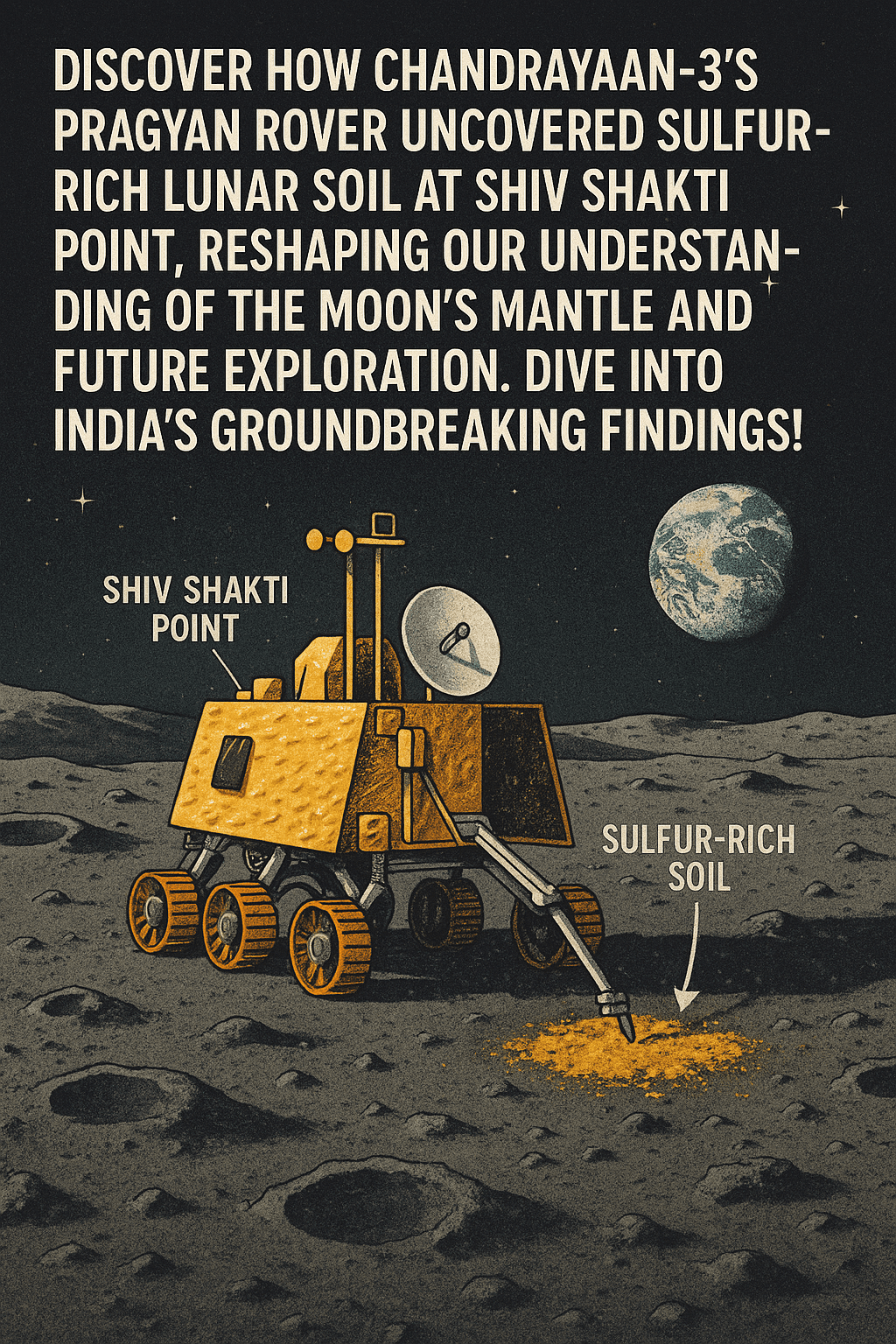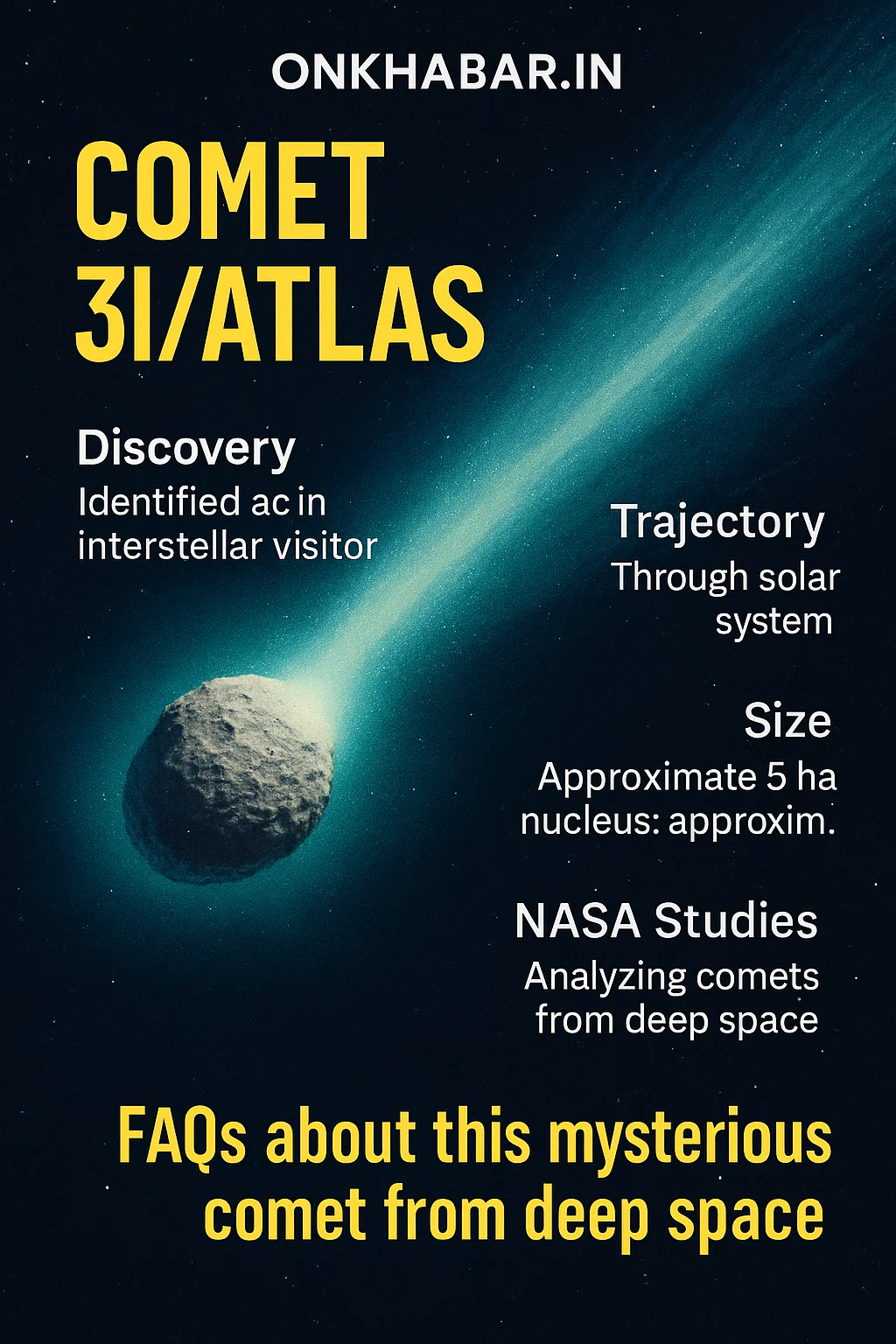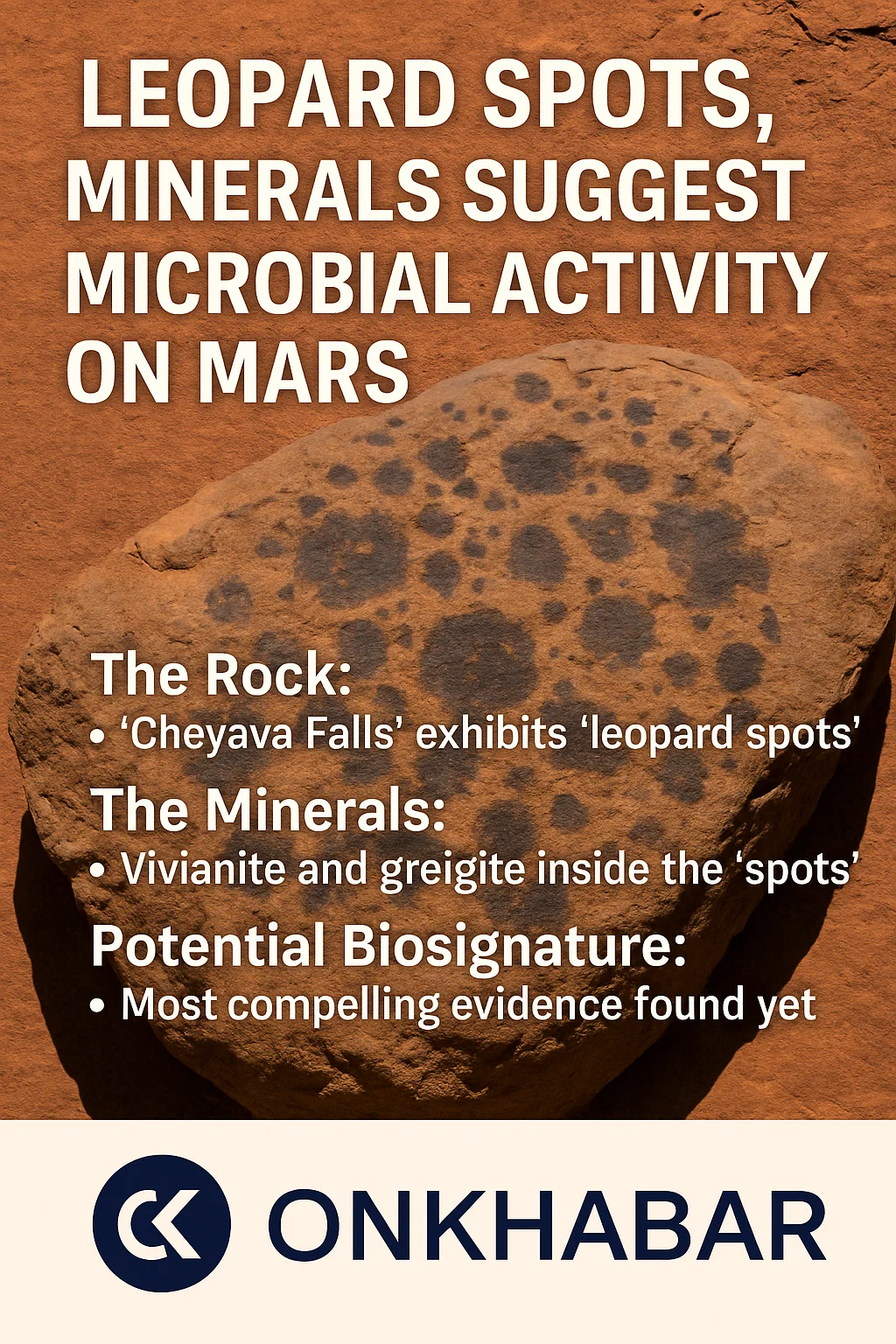
India’s Chandrayaan-3 mission has made history yet again. Nestled near the Moon’s enigmatic south pole, the Shiv Shakti Point—a site named by India’s space agency—has become the epicenter of a groundbreaking discovery. Recent data from the Pragyan rover’s Alpha Particle X-ray Spectrometer (APXS) has revealed anomalously low sodium and potassium levels alongside elevated sulfur concentrations in the lunar soil. This finding challenges long-held assumptions about the Moon’s composition and opens new doors to understanding its volcanic past, mantle evolution, and potential for future human exploration. Let’s dive into why this discovery is a game-changer for lunar science.

The Chandrayaan-3 Mission: A Brief Overview
Chandrayaan-3, launched by the Indian Space Research Organisation (ISRO), marked India’s triumphant return to lunar exploration after the Chandrayaan-2 setback. Its landing near the Moon’s south pole—a region shrouded in permanent shadows and extreme temperatures—was a technological marvel. Equipped with the Pragyan rover and Vikram lander, the mission aimed to analyze the Moon’s surface chemistry, geology, and thermal properties.
The spotlight now falls on the Pragyan rover’s APXS instrument, which detected sulfur levels far exceeding those found in samples from Apollo, Luna, or Chang’e missions. This revelation not only highlights the uniqueness of Shiv Shakti Point but also positions India as a key player in decoding the Moon’s hidden history.
Anomalous Elemental Composition: What Pragyan’s APXS Found
The APXS instrument, designed to measure elemental abundance, uncovered three critical findings at Shiv Shakti Point:
Low Sodium and Potassium Levels: Unlike lunar samples from other missions, the soil here lacks sodium and potassium—elements commonly linked to volcanic activity.
Sulfur Surge: Sulfur concentrations are 250-400% higher than those in highland regions studied by previous missions.
Volatile Element Mystery: The sulfur enrichment defies explanations like meteoritic debris or surface condensation, given the Moon’s daytime temperatures (up to 120°C).
This unusual cocktail of elements suggests Shiv Shakti Point’s soil originates from deeper within the Moon—likely the primitive mantle, untouched by later volcanic processes.
The South Pole-Aitken Basin Impact: A Window into the Moon’s Mantle
Scientists at the Physical Research Laboratory (PRL) in Ahmedabad attribute the sulfur anomaly to a cataclysmic event: the South Pole-Aitken (SPA) basin impact 4.3 billion years ago. This ancient collision, one of the largest in the solar system, excavated material from the Moon’s lower crust and upper mantle, scattering it across the southern highlands.
Critically, this impact occurred before the formation of the KREEP layer—a geochemical reservoir rich in potassium (K), phosphorus (P), and rare-earth elements (REE) that dominates the Procellarum KREEP Terrane (PKT). Most prior missions, including Apollo, landed in the PKT, skewing our understanding of lunar chemistry. Shiv Shakti Point, however, offers a rare glimpse into the Moon’s composition prior to KREEP formation.
Challenging Previous Assumptions: A New Chapter in Lunar Science
For decades, the lunar magma ocean (LMO) hypothesis has shaped our understanding of the Moon’s evolution. It posits that the Moon’s crust formed as plagioclase crystals floated to the surface of a molten magma ocean, while heavier minerals sank to form the mantle.
Chandrayaan-3’s findings lend robust support to this theory. The SPA impact likely exposed a mix of:
Ferroan Anorthosite: Calcium-rich rocks from the upper crust.
Mg-Suite Rocks: Magnesium and alkali-rich materials from the lower crust/upper mantle.
This blend of materials confirms that Shiv Shakti Point preserves a “primitive” geochemical signature, untouched by the volcanic resurfacing that shaped other regions.
Implications for Future Lunar Exploration
1. In-Situ Resource Utilization (ISRU)
Sulfur’s abundance at Shiv Shakti Point is a boon for future lunar bases. Sulfur can be used to produce:
Concrete: Sulfur-based concrete hardens quickly in the Moon’s vacuum, ideal for constructing habitats.
Solar Cells: Sulfur is a key component in advanced energy storage systems.
Life Support: Sulfur compounds could aid in water extraction or fertilizer production.
2. Sampling Primitive Mantle Materials
The site is a goldmine for understanding the Moon’s early evolution. Samples from Shiv Shakti could clarify:
The timeline of lunar lava crystallization.
How volatile elements like sulfur were distributed during the Moon’s formative years.
3. Reassessing Global Geochemical Diversity
This discovery proves the Moon’s chemistry isn’t uniform. Regions outside the PKT, like the SPA basin, hold distinct materials that challenge existing models.
India’s Rising Role in Lunar Exploration
Chandrayaan-3’s success cements India’s position as a leader in space exploration. By venturing to the Moon’s south pole—a region avoided by other agencies due to its complexity—ISRO has unlocked secrets that redefine lunar science.
This mission also showcases India’s cost-effective engineering. With a budget of roughly $75 million (a fraction of NASA’s Artemis program), Chandrayaan-3 demonstrates how innovation and precision can yield monumental discoveries.
Conclusion: A New Era for Lunar Science
Chandrayaan-3’s findings at Shiv Shakti Point are more than a scientific triumph—they’re a paradigm shift. By revealing sulfur-rich soils tied to the Moon’s primitive mantle, India has provided humanity with critical clues about our celestial neighbor’s violent past and resource-rich future.
As global interest in lunar exploration surges, Shiv Shakti Point emerges as a prime candidate for future sample-return missions and human settlements. For now, the world watches eagerly as ISRO prepares for its next leap: Chandrayaan-4, a mission that could bring these ancient lunar materials back to Earth.
Stay tuned, because the Moon’s secrets are just beginning to unravel










best blog and iformation